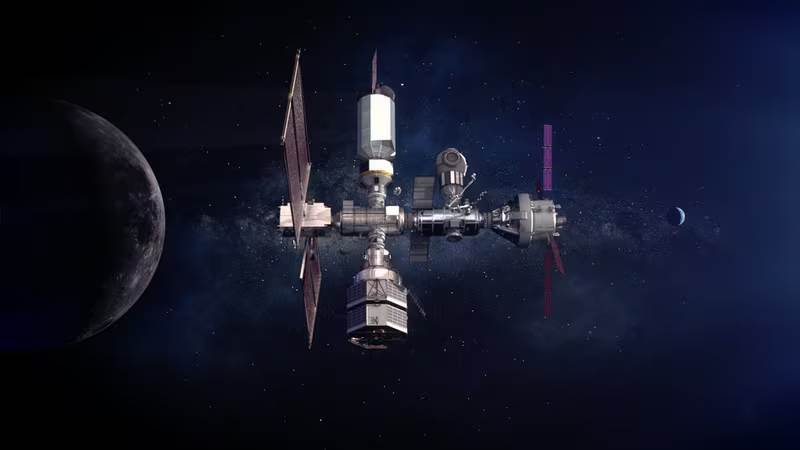
The world's first lunar space station, called Gateway, will be built and launched by NASA in collaboration with the Mohammed bin Rashid Space Centre in the United Arab Emirates. MBRSC will provide one of the most important components of the space station, a cutting-edge air lock module.
According to a Bloomberg report, NASA and the United Arab Emirates (UAE) have announced a ground-breaking partnership for the construction of the first-ever lunar space station, named Gateway.
In a move that reaffirmed their commitment to furthering space exploration, NASA and the Mohammed bin Rashid Space Centre (MBRSC) unveiled their partnership on Sunday. This joint venture is an essential part of NASA's Artemis program, which is aimed at long-term lunar exploration.
The report states that as part of the collaboration, the MBRSC will provide Gateway with an airlock module, which will enable the smooth transfer of crew members and scientific research.
The UAE's expanded role is outlined in the official statement released by the Mohammed bin Rashid Space Centre. In addition to providing the vital airlock, the UAE is also providing ongoing engineering support for the lunar space station.
As a gesture of goodwill, the UAE plans to send one of its astronauts on an upcoming Artemis mission.
Excited about the international partnership is US Vice President Kamala Harris, who chairs the National Space Council.
In saying, "By combining our resources, scientific capacity, and technical skill, the US and UAE will further our collective vision for space," Harris highlighted the benefits of working together.
In order to prepare for upcoming projects like manned missions to Mars, NASA Administrator Bill Nelson emphasized the importance of the UAE's contribution, pointing out that the airlock supplied by MBRSC will enable ground-breaking scientific work in deep space.
The airlock is an essential point of contact that supports a variety of scientific endeavors and maintenance tasks by allowing personnel and research to be transferred between the pressurized crew modules of Gateway and the vacuum of space.
Serving as a center for ongoing deep space exploration and research, Gateway's function goes beyond lunar exploration. While in lunar orbit, this space station will house and accommodate astronauts, serve as a landing pad for missions to the moon's surface, and allow spacewalking opportunities.
The partnership expands on NASA and the UAE's previous history of working together on human spaceflight. Hazzaa Almansoori made history in 2019 when she flew to the International Space Station as the first Emirati astronaut, working with NASA on research projects and public outreach. During the NASA and SpaceX Crew-6 mission in 2023, Sultan Al Neyadi—an additional Emirati astronaut—contributed to scientific research in the floating laboratory.
In the ongoing partnership between NASA and the UAE to advance space exploration and scientific endeavors, this most recent collaboration represents a significant milestone.